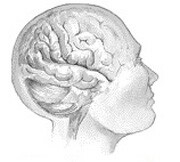- Understanding the Connection Between Anxiety and Depression
- How Daily Prunes Can Influence Cholesterol and Inflammation
- When to Take B12 for Better Absorption and Energy
- Epsom Salts: Health Benefits and Uses
- See What Saffron Can Do for Sleep and Heart Health
- 6 Common Mistakes to Avoid Before Your Physical
- Can Sweating Really Help You Beat a Cold?
- Strengthening Your Relationship: Practical Strategies
- Skip Storing This Everyday Product in the Fridge Door
- Green Tea + B3 Pairing May Boost Brain Health
Alzheimer’s-Linked Brain Plaques May Arise Decades Before Symptoms


Abnormal protein clumps may appear in the brain up to 30 years before people develop Alzheimer’s disease, a new study estimates, perhaps providing a window of opportunity to intervene.
Scientists have long known that people with Alzheimer’s disease show brain “plaques,” where pieces of a protein called amyloid abnormally clump together.
The new study, published May 19 in the Journal of the American Medical Association, confirms that brain plaques become increasingly common as people age — even when memory and thinking are still intact.
However, at all ages, plaques are more common among people with risk factors for Alzheimer’s. That includes people who already have milder memory problems, and those who carry a gene variant — APOE4 — that boosts risk for Alzheimer’s, the most common form of dementia.
But, the study authors estimate those brain plaques may emerge 20 to 30 years before full-blown Alzheimer’s symptoms arise.
“The significance of that lies in the possibilities for early intervention,” said Dr. Pieter Jelle Visser, who worked on the study. “If we can treat Alzheimer’s disease in the early stage, we may prevent the onset of dementia.”
But there are caveats, stressed Visser, of Maastricht University in the Netherlands. Possibly the biggest one: There are no established treatments for preventing Alzheimer’s in people with evidence of brain plaques.
However, clinical trials testing potential contenders are underway, Visser said.
For example, researchers are testing antibodies and vaccines that encourage the immune system to target amyloid clumps in the brain.
With any such trial, it’s critical to recruit the right patients, and the new findings underscore the usefulness of brain imaging to do that, said Dr. Roger Rosenberg, a professor of neurology at the University of Texas Southwestern Medical Center at Dallas.
Having amyloid in the brain does not mean you’re doomed to develop Alzheimer’s, said Rosenberg, who wrote an editorial published with the study.
“But it’s important to have markers that identify people at increased risk,” he said. For now, it’s useful for clinical trials, Rosenberg said, but if any preventive therapies prove effective, doctors will have to be able to identify people likely to develop the disease.
For their study, Visser’s team pooled data from dozens of previous, small studies. In total, they included almost 3,000 adults with normal memory and thinking skills, and nearly 4,000 with mild impairments, who were between 18 and 100 years old. In each study, researchers used either PET scans of the brain, or samples of spinal fluid, to detect amyloid deposits.
Among people with intact mental skills, brain plaques grew increasingly common with age, Visser’s team found. Ten percent of 50-year-olds showed amyloid deposits — a figure that swelled to 33 percent by age 80, and 44 percent at age 90.
The numbers were two to three times higher among people who carried the APOE4 gene variant, the investigators found.
Meanwhile, people with milder memory issues had a higher prevalence of brain plaques than their mentally sharper peers: almost 30 percent of 50-year-olds, nearly half of 70-year-olds, and 60 percent of 80-year-olds had amyloid deposits.
That’s all consistent with the belief that mild impairment is a risk factor for Alzheimer’s, Rosenberg said.
All of the findings confirm what smaller studies have indicated in the past, said Dr. Clifford Jack, Jr., a dementia researcher at the Mayo Clinic, in Rochester, Minn., who was not involved in the work.
“That doesn’t diminish their importance,” Jack said. “We need large studies like this to confirm what we think we know.”
For now, Jack said, the findings have no real-world implications. Outside of clinical trials, no one is using PET scans to spot dementia-free people with amyloid in their brains.
“There won’t be any practical use until anti-amyloid therapies are shown to work,” Jack said.
If and when that happens, he said, the next question will be, who gets screened?
“It would be great to have a simple, blood-based test,” Jack said. “And then if that’s positive, you move on to a PET scan.”
Despite the open questions, Jack said he sees a positive message in what researchers know so far about the Alzheimer’s disease process.
“Amyloid in the brain can be picked up many years before Alzheimer’s symptoms occur,” Jack said. “That provides us with a large window of opportunity to intervene. I think that’s good news.”
More information
The Alzheimer’s Association has more on Alzheimer’s plaques.
Source: HealthDay
Copyright © 2026 HealthDay. All rights reserved.










